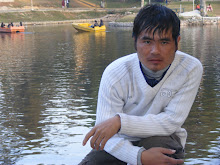(I wrote this essay in participating in the Carey's Day Essay Competition last year; I should have won the first prize; but the Judges told me that I exceeded the limited words; otherwise...??? I was a bit exasperated after seeing the award winner's writings...@ndrewLfanai(c))
INTRODUCTION:
"Sit down, young man! When God pleases to convert the heathen,
He will do it without your aid or mine."
This was the response he received from the then Director, Mr. Ryland when young William Carey proposed in the meeting of ministers at Northampton
"Expect Great Things from God.
Attempt Great Things for God"
His labour was blessed and at last, in 1792, in Kettering
CAREY’S LIFE AND ACHIEVEMENTS:
William Carey, D.D. (1761-1834), orientalist and missionary, was born 17 August 1761 at Paulerspury, Northamptonshire, (England India
Carey and his family and colleague arrived in Bengal early in 1794, and speedily discovered that Calcutta Bengal . Carey set himself with determination to overcome this obstacle. In 1795 he established a church near the factory, and there he preached in the vernacular.
After five years' work at Máldah, varied by journeys to Bhutan and Dínájpúr he moved south to the Danish settlement of Serampore, north of Calcutta , following the refusal of the East India Company to grant permission to reside in its territory to a party of BMS recruits who had just arrived in Bengal in 1800.[1] Three young[2] missionaries, together with their families arrived. A school and printing press were the first requisites, and a Bible in Bengali was at once put in hand and duly appeared, together with other versions of the scriptures, in Mahratta, Tamil; in altogether twenty-six languages, besides numerous philosophical works. The Serampore trio built up the work of Serampore to a level which attracted a widespread admiration in Britain
In 1801 Carey was appointed professor of Sanskrit, Bengáli, and Mahratta in the newly founded college of Fort William, and, continuing the pursuit of linguistics and proselytes, published a Mahratta grammar in 1805, and opened a mission chapel in Calcutta in the same year. There was, however, a strong feeling against over-zealous proselytizing as a political danger, and Carey was cautioned to abstain from preaching or distributing tracts for a while, although the government assured him that they were well satisfied with the character and deportment of his missionaries, against whom there were no complaints. In 1807 Mrs. Carey died, after having been violently insane for several years. In spite of her affliction, Carey's love and tenderness toward her never ceased. In spite of such official curbs the mission grew steadily, and in 1814 had twenty stations in India
Besides the Indian versions of the scriptures, in which he took a vigorous part, he published grammars of Mahratta (1805), Sanskrit (1806), Punjábi (1812), Telinga (1814), Bhotanta (1826?); dictionaries of Mahratta (1810), Bengáli (1818, 3 vols. ; 2nd ed. 1825; 3rd ed. 1827-30), Bhotanta (1826), and had prepared materials for one of all Sanskrit-derived languages; but these were destroyed in a fire which occurred in 1812 at the press at Serampore. He also edited the 'Ramayana,' in 3 vols. 1806-10, and his friend Dr. Roxburgh's 'Flora Medica,' for he was an excellent botanist.
Through all the forty-one uninterrupted years of Carey's missionary career, his zeal was unabated. But at last his strength failed — the end was drawing near. After being weakened by many attacks of fever he was struck with apoplexy July 1833, and lingered in a feeble state till 9 June 1834. He was thrice married, and left three sons, one of whom was Felix Carey. The last resting-place of the venerable missionary was marked only by a simple epitaph of his own composing:

Wm. Carey
Born, August 17, 1761
Died, June 9, 1834
"A wretched, poor, and helpless worm,
On Thy kind arms I fall."
Forty-one years in
"Perhaps this is one of the strongest chains with which the devil ever bound the children of men. This is my comfort — that God can break it."
In Carey’s missionary programme, the opening of a charity school was given first priority. The contribution that William Carey and his associates- Joshua Marshman and Ward made towards spreading education through the medium of the Indian languages especially Bengali is laudable. In 1794, a charity school was established at Madnabatty with 40 boys. He had written to his son, “One of the first things to be done will be to open a charity school”. Now, this dream has been realized.[4]. In 1800, a Bengali school was established and the number of schools established by mission eventually rose to 111 with about 10,000 students. The curriculum of these schools included Oriental languages and philosophy in conjunction with western science.[5]
Education for Girls was emphasis. At that time in India Calcutta
Carey’s also written a Multi-lingual dictionary which was written in the style of the celebrated Sanskrit dictionary entitled as Amarkosh. Carey drew up a manuscript of a multilingual dictionary of 13 Indian languages.
[1] B. Stanley, “William Carey” in Biographical Dictionary of Evangelicals, Ed. Timothy Larsen (Leicester : Inter-Varsity Press, 2003), 118-121.
[2] The new missionaries were Joshua Marshman and William Ward, whose names will always be associated with that of Carey.
[3] B. Stanley, “William Carey…, 118-121.
[4] Malay Dewanji, William Carey and the Indian Renaissant (New Delhi: ISPCK, 1996), 45.
[5] Malay Dewanji, William Carey and the Indian …46.







No comments:
Post a Comment